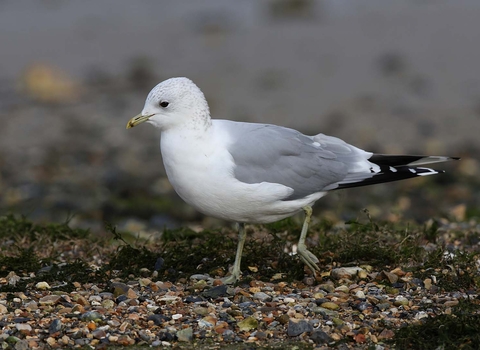
©Margaret Holland
Common gull
Despite its name, the common gull is not as common as some of our other gulls. It can be spotted breeding at the coast, but is also partial to sports fields, landfill sites and housing estates in winter.
Enw gwyddonol
Larus canusPryd i'w gweld
January to DecemberGwybodaeth am rywogaethau
Categori
Ystadegau
Length: 38-44cmWingspan: 110-130cm
Weight: 300-480g
Average lifespan: 10 years
Classified in the UK as Red following a 2024 update to the Birds of Conservation Concern 5: the Red List for Birds (2021).
